opening hours
Monday closed
Tuesday to Sunday 11 am – 7 pm
Monday 8 December 11 am > 7 pm
Wednesday 24 December 11 am > 4:30 pm
Thursday 25 December closed
Wednesday 31 December 11 am > 4:30 pm
Thursday 1 January 11 am > 7 pm
Monday 5 January 11 am > 7 pm
Tusday 6 January 11 am > 7 pm
- full price € 15 at the box office - € 14 online
- reduced price € 12 at the box office - € 11 online
– for young people aged between 18 and 25 (not yet turned 25);
– for groups of 15 people or more;
– La Galleria Nazionale, Museo Ebraico di Roma ticket holders;
– upon presentation of ID card or badge: Accademia Costume & Moda, Accademia Fotografica, Biblioteche di Roma, Centro Sperimentale di Cinematografia, Enel (for badge holder and accompanying person), FAI Fondo Ambiente Italiano, Feltrinelli, Gruppo FS, IN/ARCH Istituto Nazionale di Architettura, Sapienza Università di Roma, LAZIOcrea, Palazzo delle Esposizioni, Amici di Palazzo Strozzi, Accademia Nazionale di Santa Cecilia, Scuola Internazionale di Comics, Teatro Olimpico, Teatro dell’Opera di Roma, Teatro di Roma, Università degli Studi di Roma Tor Vergata, Youthcard; - open € 18
valid for one year from the date of purchase
- free
– minors under 18 years of age;
– myMAXXI cardholders;
– on your birthday presenting an identity document;
– upon presentation of EU Disability Card holders and or accompanying letter from hosting association/institution for: people with disabilities and accompanying person, people on the autistic spectrum and accompanying person, deaf people, people with cognitive disabilities and complex communication needs and their caregivers, people with serious illnesses and their caregivers, guests of first aid and anti-violence centres and accompanying operators, residents of therapeutic communities and accompanying operators;
– MiC employees;
– journalists who can prove their business activity;
– European Union tour guides and tour guides, licensed (ref. Circular n.20/2016 DG-Museums);
– 1 teacher for every 10 students;
– AMACI members;
– CIMAM International Committee for Museums and Collections of Modern Art members;
– ICOM members;
– from Tuesday to Friday (excluding holidays) European Union students and university researchers in art history and architecture, public fine arts academies (AFAM registered) students and Temple University Rome Campus students;
– IED Istituto Europeo di Design professors, NABA Nuova Accademia di Belle Arti professors, RUFA Rome University of Fine Arts professors;
– upon presentation of ID card or badge: Collezione Peggy Guggenheim a Venezia, Castello di Rivoli Museo d’Arte Contemporanea, Sotheby’s Preferred, MEP – Maison Européenne de la Photographie;
Robert Wilson. Mother
- ticket € 5
limited seating; it is mandatory to arrive at the infopoint 15 minutes before the start time indicated on the ticket; the experience lasts approximately 45 minutes
- Mother + Museum ticket € 17
limited seating; it is mandatory to arrive at the infopoint 15 minutes before the start time indicated on the ticket; the experience lasts approximately 45 minutes
Collection
MAXXI’s Collection of Art and Architecture represents the founding element of the museum and defines its identity. Since October 2015, it has been on display with different arrangements of works.


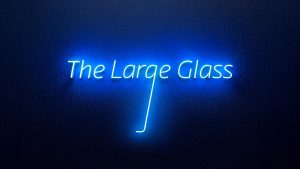
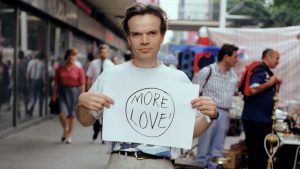
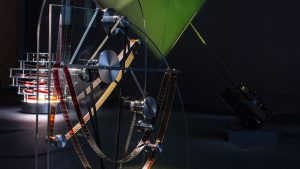

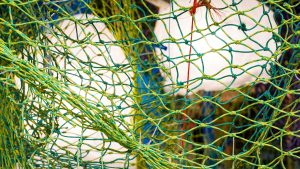
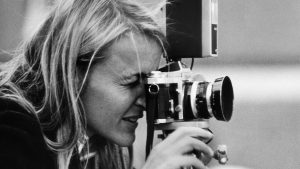

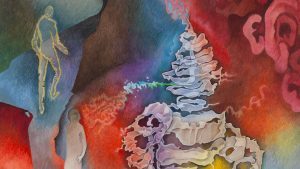
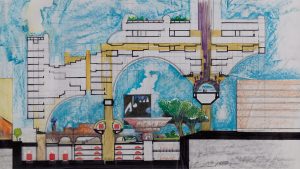
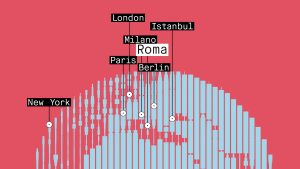

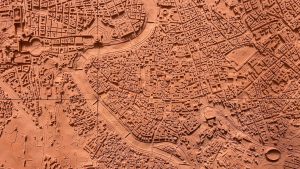

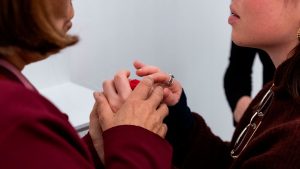
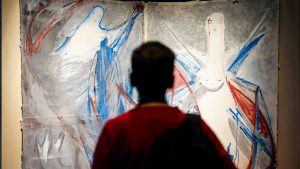
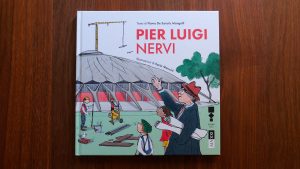
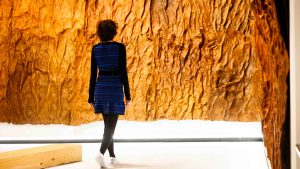
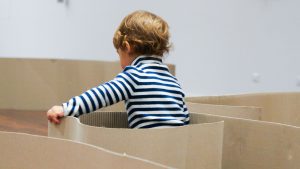
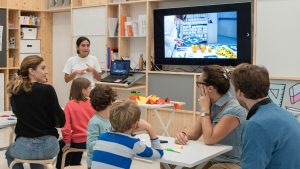
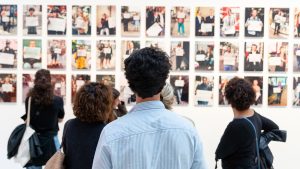
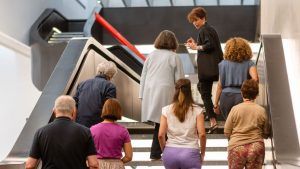
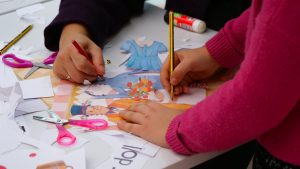
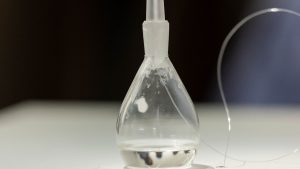
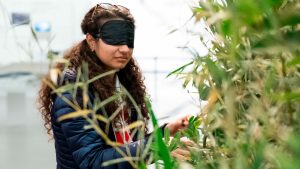
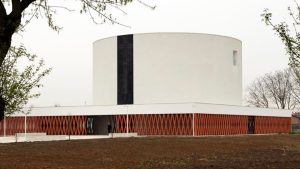
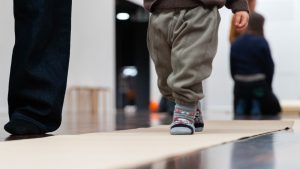
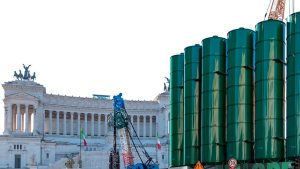
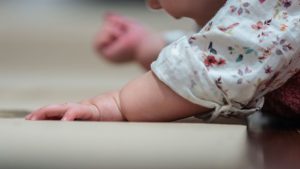
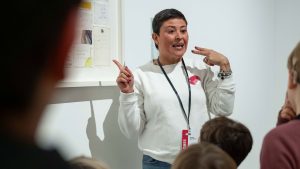
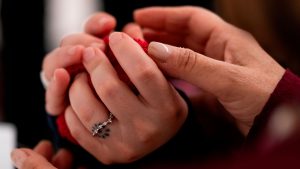


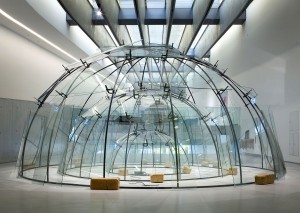
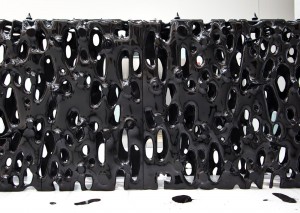
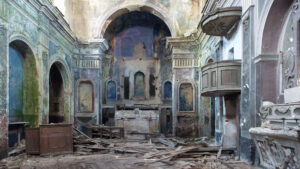



> Rosa Barba/ Agrigento 1972
> Rossella Biscotti/ Molfetta 1978
> Gianluca and Massimiliano De Serio/ Turin 1978
> Piero Golia/ Naples 1974
Rosa Barba
The Hidden Conference: about the discontinuous history of things we see and don’t see, 2010
9.30’, 35mm, optical sound
Private Tableaux, 2010
7’, 16mm, optical sound
Invisible Act, 2010
loop, 16mm, silver ball, celluloid
The Hidden Conference: about the discontinuous history of things we see and don’t see is born of a reflection made by Rosa Barba on the conservation of art works in the storage of various museum of modernist sculpture heritage. This is the first chapter of a larger investigation of cultural storages and archives. The artist witnesses a fictive conference of these artworks within their condition of silent coexistence with the spaces they are kept by turning the location into a Theatre-stage with a specific light choreography.
Private Tableaux takes its cues from the studies conducted over the years by the numerous professionals and engineers who have examined the stability of works of underground architecture. Using different drawings, realized by scientists for reasons of study, what emerges case-by-case are all of the deformations evident on the walls, in the end becoming the involuntary representation of a parallel story, whose dense diffusion of signs occupies the entire volume of the space.
Invisible Act is a sculptural installation bringing projected image and recollected language, material and imagined object, into an oppositional and conflating dialogue. The art works speculate on the nature of the document not just as is finalized but as the present tense of reflection – less an act of translation but the continual transposition of material into image and back again.
Courtesy the artist, Gallery Giò Marconi, Milano; Carlier Gebauer, Berlino
Rossella Biscotti
Il Processo, 2010-2011
audio installation, 8 hours, loop; reinforced concrete casts; performance in the Courtroom Bunker of Foro Italico, the former Corte d’Assise di Roma
The project by Rossella Biscotti originates with a research into the architectural spaces of the Foro Italico and political movements in Italy in 1970s. Biscotti is interested in the architectural and functional transformations of a number of historically famous sites. In this case, the fencing hall designed by Luigi Moretti, assumed as an emblem of this transformation – from a sports hall during the Fascist era to a courtroom-bunker for the some of the most important political trials of the 1970s and 80s. Taking her cues from the so-called “7 April” trial against numerous members of Autonomia Operaia, she creates a mise en scene of an archaeology of fragments: reinforced concrete casts of details of architectural superfetations (defendants’ cage, cells, microphones, security systems), transcriptions, recordings and re-enactments of trial in an audio installation in the stairwell. The piece is completed by a series of performances realized inside the former courtroom-bunker itself.
Gianluca and Massimiliano De Serio
Stanze, 2010
HD, 58’
Stanze is a sort of poetic sequence that takes inspiration from and gives a contemporary twist to oral tradition in Somalia, where poetry was used as an instrument of public and political debate. The film is the work of a number of young political refugees from Somalia, in what was their last “home” in Turin: the La Marmora barracks in Via Asti, which is an authentic centrifuge of Italian history. Built during the first period of Italian colonialism in the Horn of Africa, the barracks was used during the years of Fascism by the Republican National Guard, and became the place where Resistance fighters were tortured and executed. A number of Fascists who had worked in Via Asti were sentenced in the 1946 trial, but were able to take advantage of an amnesty. The barracks has now become a reception centre for Somali political refugees, who are the actors in Stanze. The contribution made by the writer and cultural mediator Suad Omar made it possible to start up a collective work in which each individual tells their own story, the uprooting forced upon them, and the inability of Italy to give refugees adequate reception. They gradually begin to act out excerpts from the 1946 trial, which have been recovered after considerable research work.
The film starts once every hour, beginning at 11:00 a.m., based on the Museum’s opening hours.
Credits: Photography and Camera Operator: Mario Amura; RED Assistant: Marco Pasini; Operator’s Assistant: Paolo Benitti, Gabriele Gallareto; Live Audio Recording: Daniele Turi and Alessio; Video Editing: Carlo Cagnasso Sound Design: minus (minusandplus.net); RED: Technovision Rome; Colour Correction: Marco Fantozzi. CAST: Suad Omar Sheikh Esahaq; Abdullahi Ahmed Abdullahi ; Adnan Mohamed Abdi; Abdulaziz Ali Hassan; Farhan Ahmed Mohamed; Ahmed Mohamud; Jinow Ahmed.
Piero Golia
Untitled (Carpet), 2002- 2006
spray paint
Oh my God That’s so Awesome (Monkey Picture), 2009
photo printed on PVC mesh
On the Edge (Sulla cresta dell’onda), 2000
palm tree
Piero Golia examines the theme of the relationship between the museum institution and the artist, between the space of exhibition and the work of art, between the visible and the invisible in an installation composed of three elements: a large arrow, situated on the roof of the building in front; a giant image of a monkey which was supposed to be installed on the façade of the apartment building visible through the great window and a palm tree in the square of the Museum. Each part of the installation refers to the other, in a circular dialogue that connects the work and its single aspects to Piero Golia’s artistic experience. The image of the monkey – conceived in a urban and architectural scale – is now forced to be inside the exhibition space. The three works directly confront themselves with the scale and the dimension of the museum, it’s indoor and outdoor spaces, between art and architecture. In an ideal itinerary through the last ten years of the artist’s career, represented by the three works exhibited, the project reflects on the museum function and on the institutionalisation of the work of art.
ph Sebastiano Luciano (part)